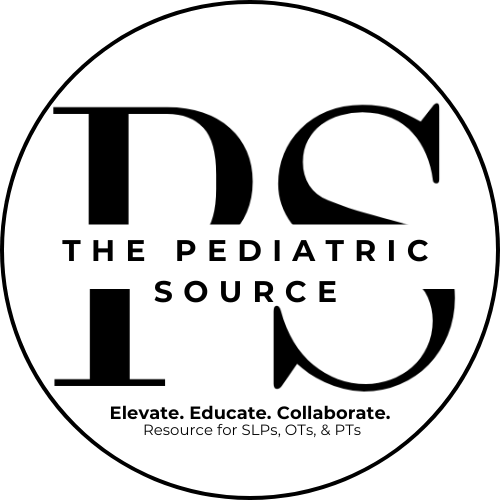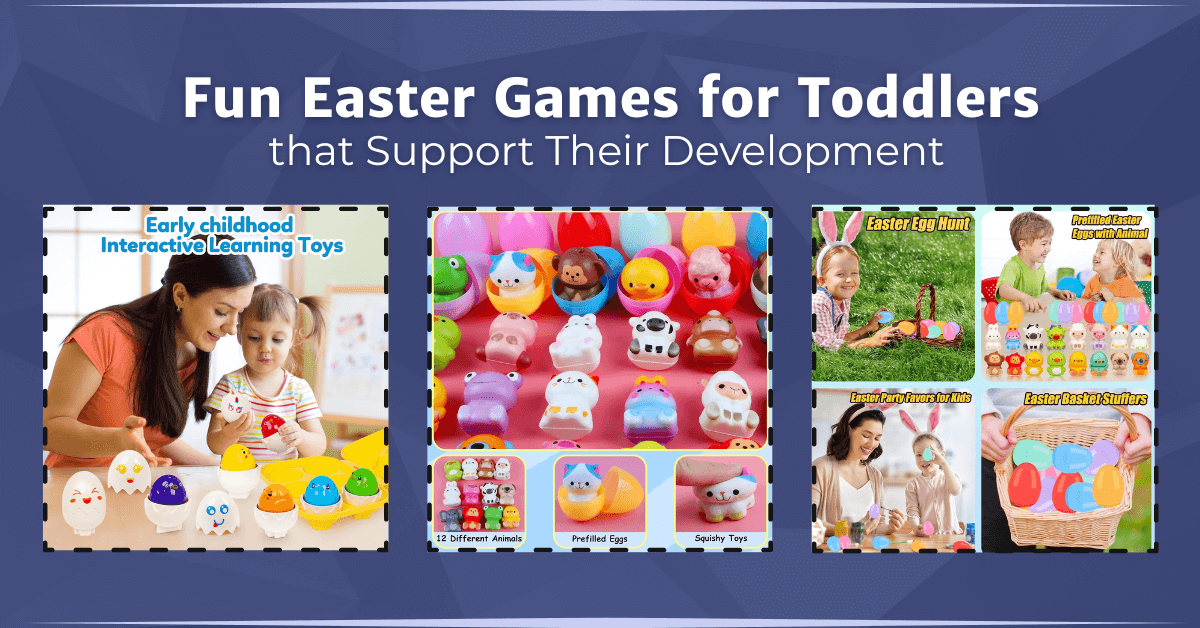We're not going to give you some complicated stuff here. We've got simple, yet fun Easter games for toddlers to help them with talking, moving, and playing nicely. They're engaging, practical, and easy to set up, so you don't spend hours prepping. Let's get them learning without them even realizing it.
These Easter-themed activities can be adapted to target critical developmental goals and skills such as language development, fine motor coordination, and social interaction. They also help incorporate evidence-based strategies into your practice, improve therapy outcomes, and engage children effectively.
Let's bring some Easter joy into our play therapy, making it both engaging and supportive of their development.
Easter Games for Kids for an Egg-celent Adventure
1. Egg Hunt with a Twist
Easter egg hunts are a classic tradition, but why not add a fun language twist? It can make the hunt not just entertaining, but also a fantastic learning experience for toddlers.
With just a few simple changes, you can work on specific speech and language skills while keeping the little ones engaged and active!
How To Set up the Egg Hunt with a Twist
How to Play
- Hide colorful plastic eggs around your therapy space, home, or outdoors.
- Inside each egg, place a speech or movement challenge tailored to the child’s specific needs.
Articulation Practice
Hide pictures or words with target sounds inside each egg.
- For example, if a child is working on the /s/ sound, you might include words like sun or sand. Focus on giving opportunities to model or attempt the sound rather than expecting perfection.
The goal is exposure and engagement at the child’s current level.
Perfection doesn’t matter as long as there is an opportunity to produce the sound, model, see an approximation, or even say the whole word. Keep it at their level.
Expressive Language for Older Kids
How you support expressive language will depend on the child’s current level of communication.
- For early communicators or minimally verbal toddlers, model simple phrases during play rather than asking questions. For example, you might say, “I see egg,” “I found it,” or “Blue egg!” to give the child language they can imitate without pressure.
- Use parallel talk and self-talk to describe what the child is doing or what you are doing: “You opened it,” “It’s a bunny,” “I’m looking for more eggs.”
- For children who are starting to combine words or use short sentences, offer expansion models. If they say “egg,” you can respond with “You found an egg” or “Big egg.”
- With more verbal children, you can start to ask open-ended questions like “What did you find?” or “What’s inside?” to encourage longer responses and storytelling.
- Always follow the child’s lead, pause to give them time to respond, and reduce the number of direct questions if they become overwhelmed.
Receptive Language
Use the egg hunt to practice following directions with embedded concepts like prepositions, sequencing, and actions. Start with simple, one-step directions, and build up as the child’s understanding grows.
Examples of one-step directions:
- Put the egg in the basket
- Hide the bunny behind the chair
- Touch the egg under the blanket
For children ready for more, try multi-step directions:
- Take the blue egg, then put it on the table
- Find the chick and place it inside the box
- Before you hop, put the green egg between the chairs
You can also make it silly and fun by adding movement:
- Find the egg, then wiggle your arms
- Hop like a bunny after hiding the carrot
Tip: For early learners, model the phrase and emphasize key words. You might say “Egg under chair” and point, focusing on the word under if that’s your target.
Toy Suggestions
1. Marching Eggs Toy: This colorful matching eggs toy offers a hands-on way for toddlers to build key skills while having fun. Each egg opens to reveal a unique shape, encouraging little ones to match and sort them correctly.
Developmental Benefits:
- Boosts shape and color recognition
- Strengthens fine motor skills, hand-eye coordination, and problem-solving
- Includes chirping chicks that add a delightful sensory and auditory element
Toddlers can enjoy sorting by color and shape while interacting with the chicks—building spatial awareness in a playful, engaging way.
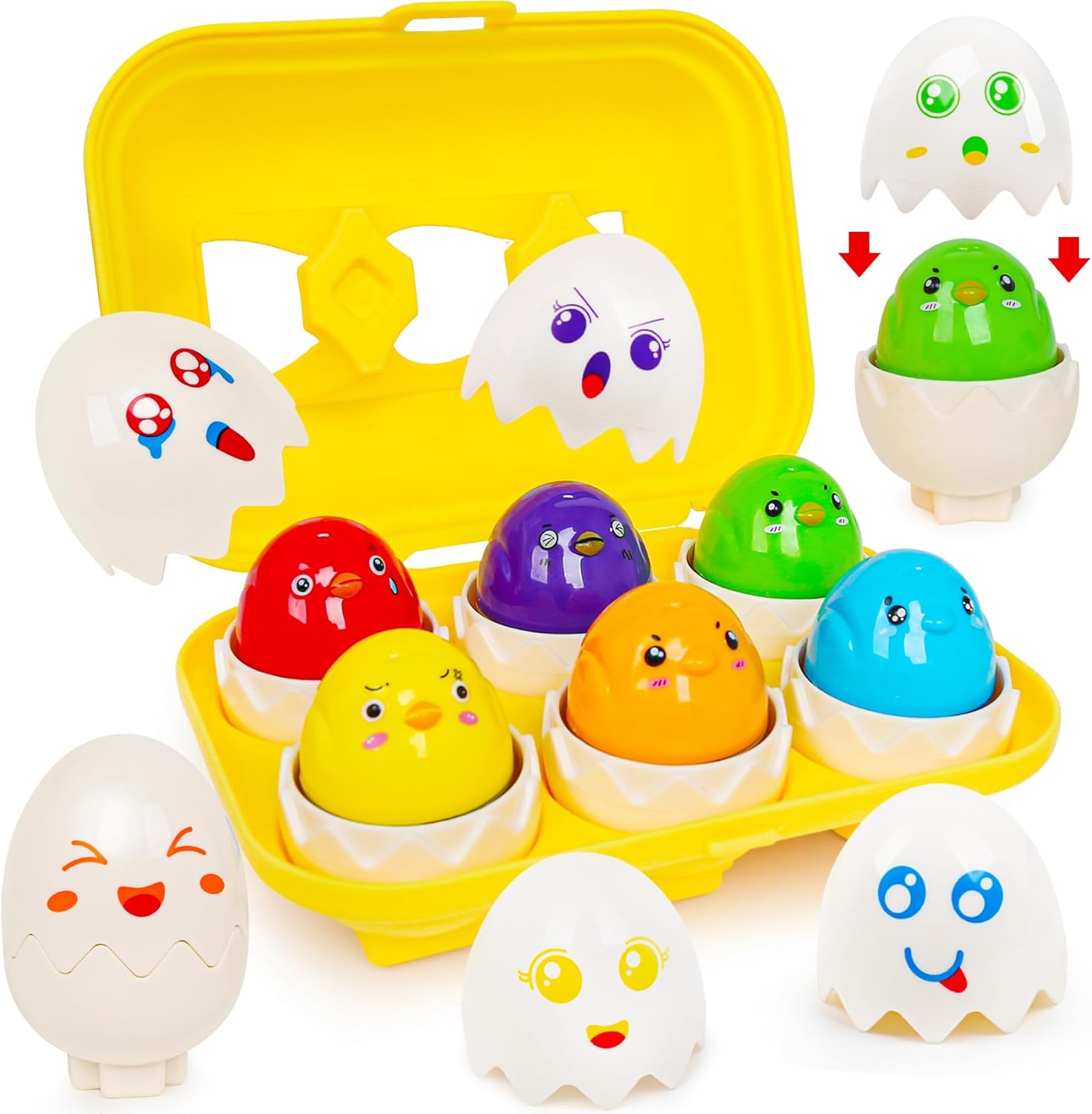
2. 24 Pack Prefilled Easter Eggs with Animal Squishy Toys -
This 24-pack of prefilled Easter eggs with animal squishy toys is a delightful way to enhance the child's Easter experience while supporting their development. Each egg contains a soft and slow-rising squishy toy in one of 12 adorable animal shapes, providing a fun sensory experience that encourages creativity and motor skill development.
This 24-pack of prefilled Easter eggs with animal squishy toys is a delightful way to enhance the child's Easter experience while supporting their development. Each egg contains a soft and slow-rising squishy toy in one of 12 adorable animal shapes, providing a fun sensory experience that encourages creativity and motor skill development.
The tactile nature of these toys helps toddlers refine their fine motor skills as they squeeze and manipulate the squishies, while the variety of colors and shapes supports cognitive development by promoting color recognition and sorting skills.
These squishies also offer a calming effect, helping to relieve stress and anxiety, making them an excellent addition to Easter-themed activities for young learners.
Language Development
This interactive play not only develops gross motor skills but also promotes imaginative thinking and role-playing, making it an excellent addition to Easter-themed activities for young learners.
- You can hide the eggs and ask "Where is the egg?" to practice receptive skills and prepositions, encouraging children to think about locations and directions.
- Additionally, the animal shapes inspire imaginative play and movement activities. For example, you can use the frog squishy to practice "frog jumps," encouraging physical activity and creativity while pretending to be a frog.
Disclaimer: To support this website and bring you valuable content, we may include links to related products or services.
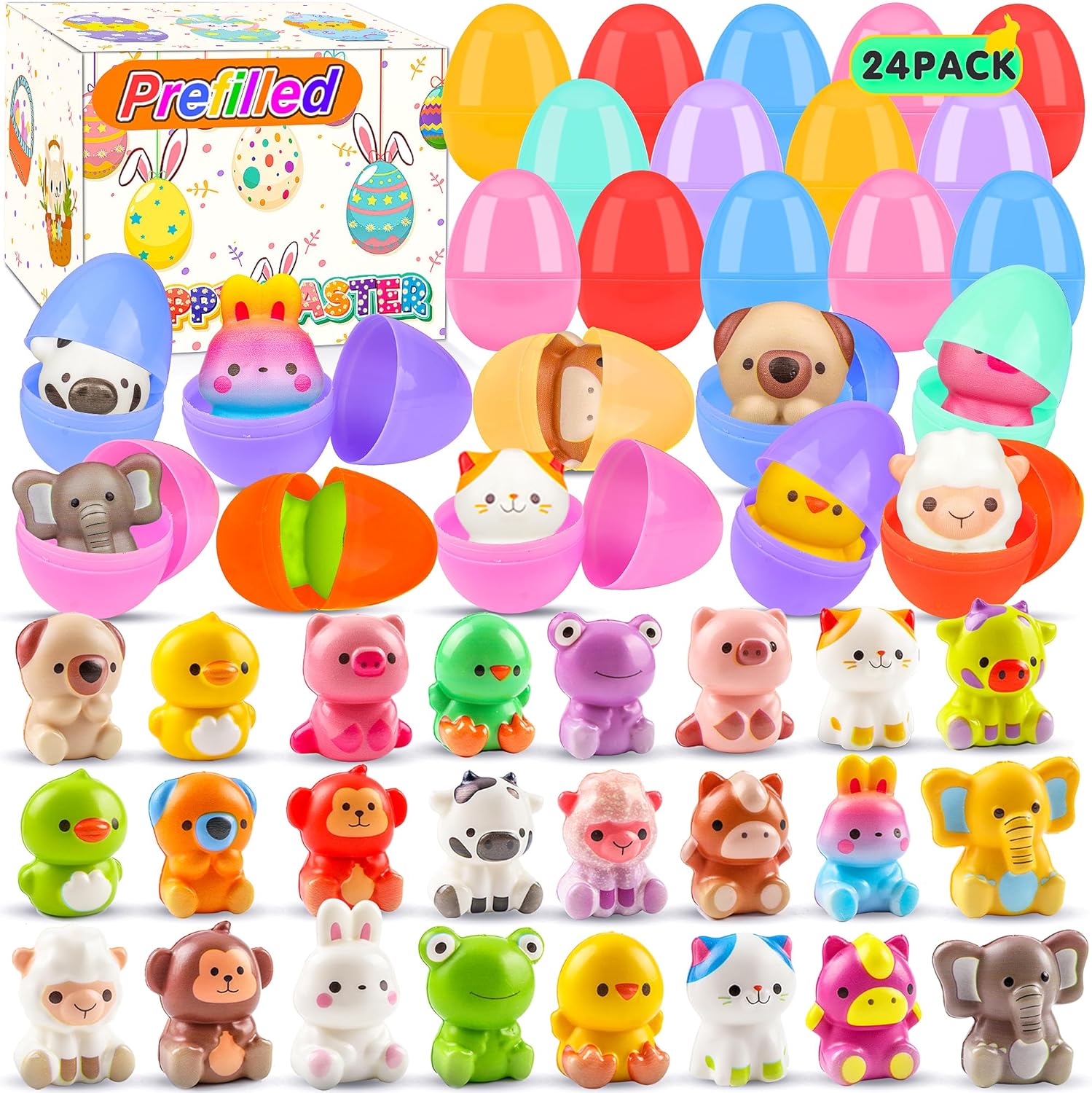
Therapeutic Benefits of the Egg Hunt
- Articulation Practice: By hiding specific items or pictures in the egg of the target sound, you keep it engaging and allow for more practice drills without them noticing. Remember, it's not about the sound being perfect; it depends on where they are.
- Vocabulary Building: Here’s how an Easter egg hunt can support vocabulary growth:
- Object Identification: During an egg hunt, children are exposed to various objects, such as eggs, baskets, and different types of toys or treats inside the eggs. This exposure helps them learn new words like "egg," "basket," and "toy." For example, you can point to an egg and say, "Look, an egg!" or "Find the egg!" to reinforce vocabulary.
- Action Verbs: The act of searching, finding, and picking up eggs introduces action verbs like "search," "find," and "pick up." You can encourage children to use these verbs by saying, "Let's search for eggs!" or "Can you pick up that egg?" This helps build their understanding of actions and movements.
- Prepositions: Hiding eggs in different locations encourages the use of prepositions like "in," "under," "behind," and "above." Asking questions like "Where is the egg?" or "Is the egg under the couch?" helps children understand spatial relationships and develop receptive language skills.
- Descriptive Words: The variety of egg colors and shapes can introduce descriptive words like "red," "blue," "big," and "small." You can say, "Find the big red egg!" or "Look for the small blue one!" to help children learn these adjectives.
- Imaginative Play: Using animal-themed toys or squishies inside the eggs can spark imaginative play, encouraging children to use vocabulary related to different animals and their sounds. For instance, if a child finds a frog squishy, you can say, "Ribbit! You found a frog!" to promote vocabulary and creativity.
- Expressive Language: Egg hunt encourages language by following models like " I found blue egg", making requests like "open", "open egg".
- Fine Motor Skills: Collecting and matching eggs works on hand-eye coordination and fine motor control
Disclaimer: These are examples, but modify them to your child's needs.
Disclaimer: These are examples, but modify them to your child's needs.
Combining Fun and Therapy with Easter Games
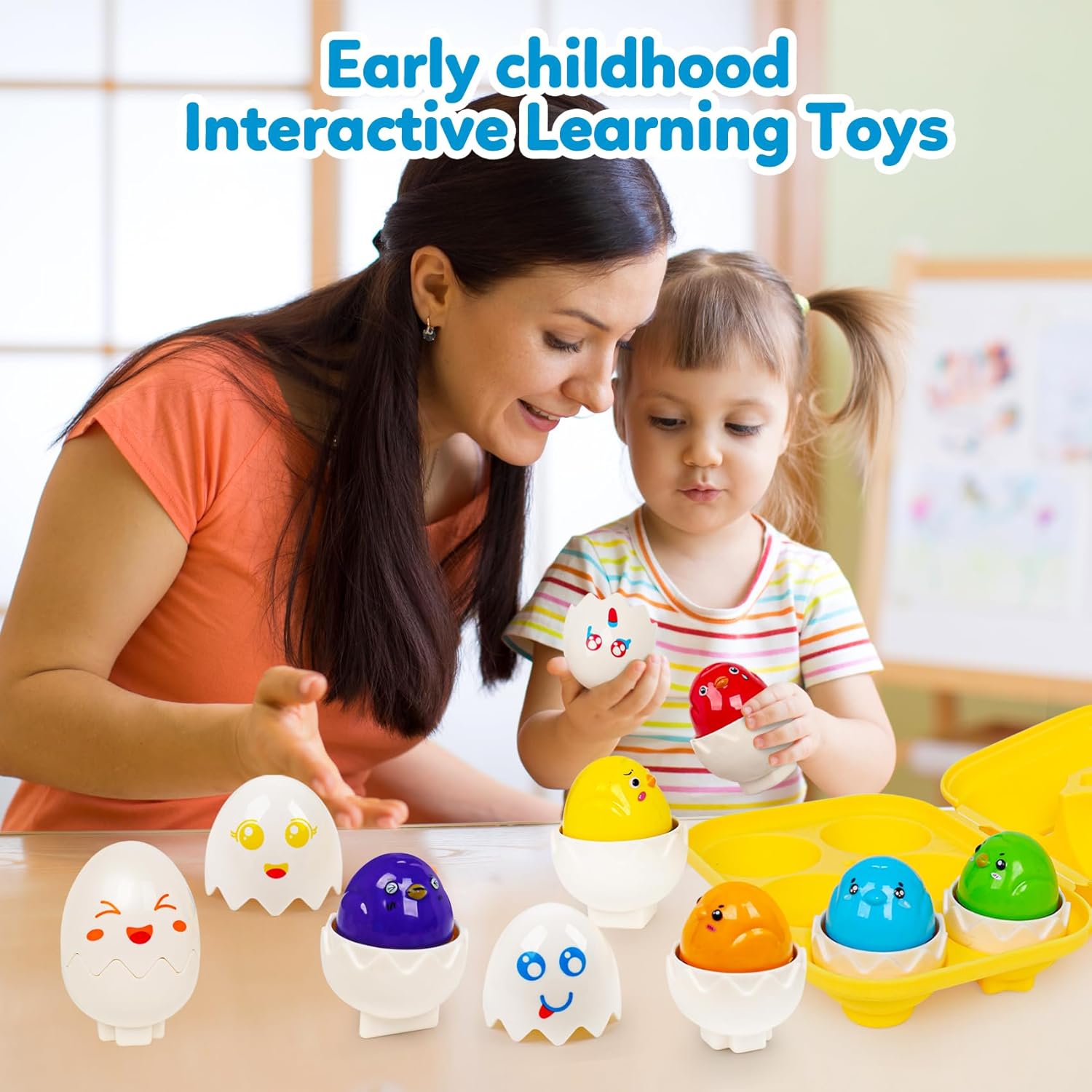
Incorporating Easter-themed games into therapy sessions not only makes the learning process more enjoyable but also provides tangible developmental benefits for toddlers.
Activities like the egg hunt can target language goals and can seamlessly integrate into your therapy plans.
Activities like the egg hunt can target language goals and can seamlessly integrate into your therapy plans.
